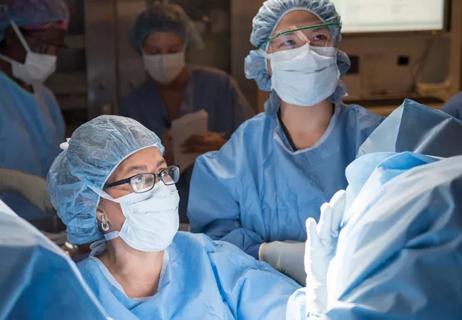A Q&A with Dr. Francis Papay

Francis Papay, MD, Chairman of the Dermatology & Plastic Surgery Institute at Cleveland Clinic, brings a voraciously curious mind and a knack for working with others to come up with ingenious solutions to clinical problems in medicine. Widely known as one of the team of surgeons who performed the first face transplant in the United States in 2009, Dr. Papay is a prolific inventor — mainly of medical devices but also of systems and methods for solving challenging clinical problems. He has worked on developing an implantable device for a surgical approach at the base of the skull to control headache pain, especially cluster migraines.
Cleveland Clinic is a non-profit academic medical center. Advertising on our site helps support our mission. We do not endorse non-Cleveland Clinic products or services. Policy
Dr. Papay also holds patents on methods for using nerve evoked potentials to monitor a surgical procedure; a system and method for wound healing; and surgical tools to facilitate delivery of a neurostimulator into portions of the skull, among others. His current efforts are directed toward neuromodulation for sleep apnea, and augmented reality digital loops for fluorescent guided therapy.
Consult QD sat down with Dr. Papay to discuss how he balances being both a surgeon and an inventor, and find out what advice he has to offer others interested in making their ideas become a reality.
Dr. Papay: I inherited the knack from my father who was a tinkerer. Growing up in the ’60s, I was in awe of the space program. I was a percussionist in a drum and bugle corps and had the good fortune to meet Neil Armstrong and shake his hand at a homecoming parade for him in his hometown of Wapakoneta, Ohio.
As a young person, I always thought that engineering was where I was headed. But in the honors program at Ohio University I took a class in comparative anatomy and fell in love with zoology. From there I decided that the best combination of my interests would be biomedical engineering and I entered the master’s program at Case Western Reserve University in biomedical engineering.
Because of my boyhood fascination with the space program, I always wanted to work with NASA and I was able to get an internship at the NASA Glenn Research Center working with Bruce Banks, a great inventor at NASA.
I ended up going to medical school after that, and it was after a surgical rotation that I decided I wanted to do plastic surgery, a field where you learn to work with others to creatively solve difficulty problems. But I attribute my path to the `Forest Gump’ effect — the serendipity of relationships I have formed throughout this journey. It hasn’t been about me, but about how the relationships have influenced me and my direction in life.
Plastic surgery has no anatomic boundaries. We are the `fix it guys’— we are always flying by the seat of our pants, looking for different techniques that can be applied to specific problems for multiple subspecialties. It’s a field where you learn from other modalities how to apply a fix to a problem. Being an inventor and a problem solver really requires the physician to have the social intelligence to work with others and to align incentives.
It’s not about you. Don’t be narcissistic and don’t be selfish. You need the humility and respect for others’ talents to collectively bring people together. Try to be a servant leader. Solving problems in medicine means working with the collective intelligence of others. Together you have to first of all identify a problem that’s `worth it,’ a problem that really demands a solution. Then look around at different subspecialties in medicine and different industries outside of medicine for solutions that can be applied to your problem. Find a solution, or part of a solution, that already exists.
An institution like Cleveland Clinic can give you the latitude to be creative, to bring together different subspecialties to look at problems and how to solve them. Medicine and inventing are dynamic fields —you don’t do it alone. It’s a team sport.
The institution can provide the operational management to bring different groups and subspecialties together to look widely at the where the needs are in medicine and healthcare, develop teams and support them in their effort to solve problems. It’s when you are able to align the incentives and get everyone to work together that you create the magic.
For more information on leadership programs to help you live up to your full career potential, visit the Samson Global Leadership Academy, Patient Experience Leaders Forum or Executive Visitors’ Program.

Don’t be afraid to ask staff for help, explanations

3 Women's Professional Staff Association members field this question

Learn from Cleveland Clinic, Facebook, Google, Verywell & more

Campus scheduled to open in summer 2019

And critical to effective leadership

#1 contributor to burnout among many

Istanbul physician shares his experience

Seize challenging opportunities to grow